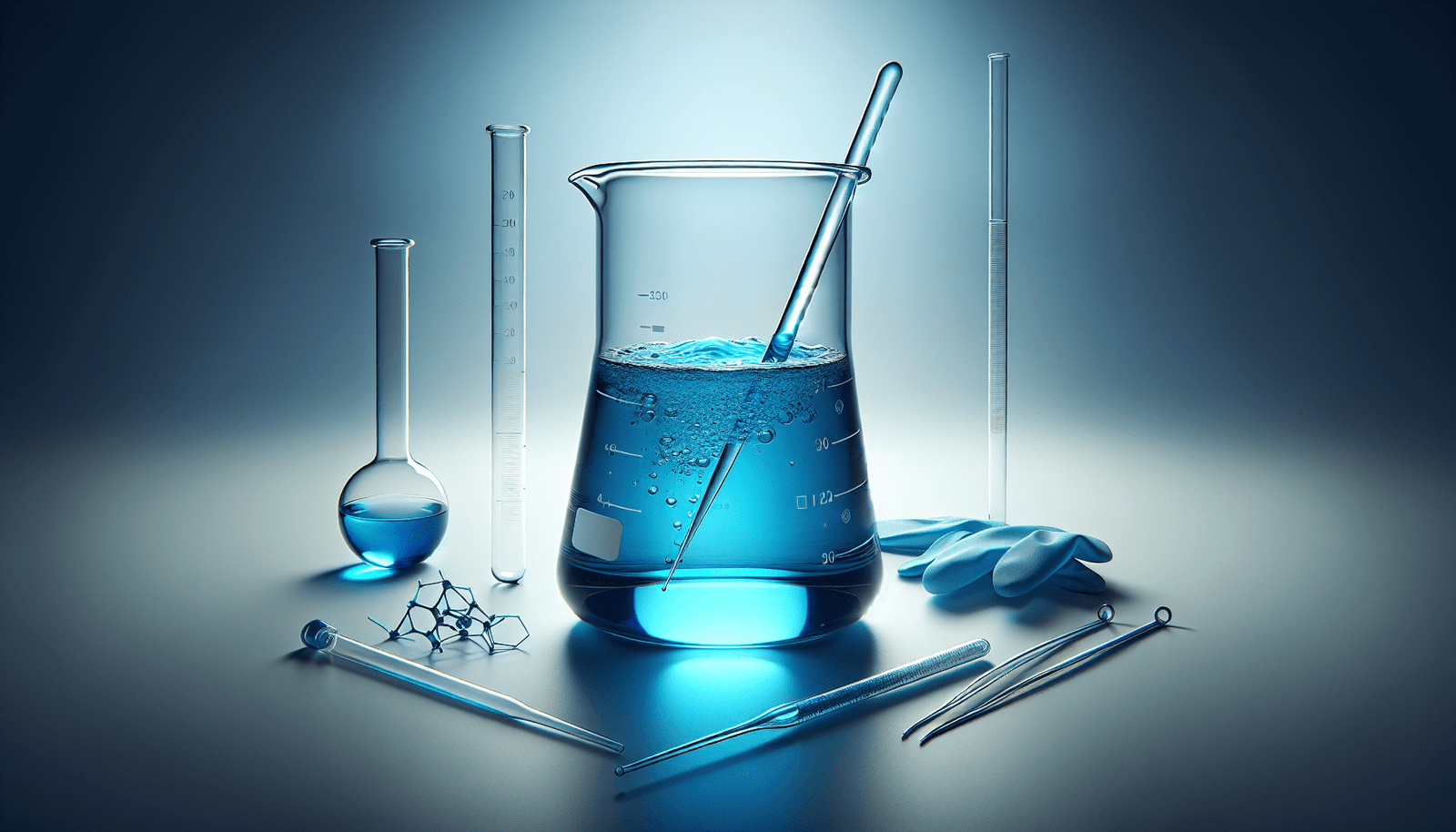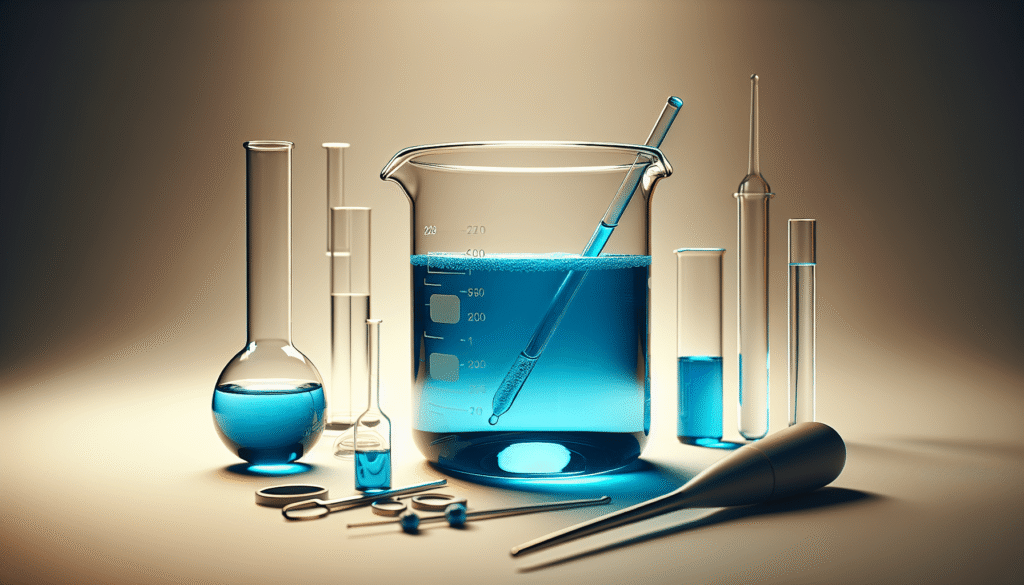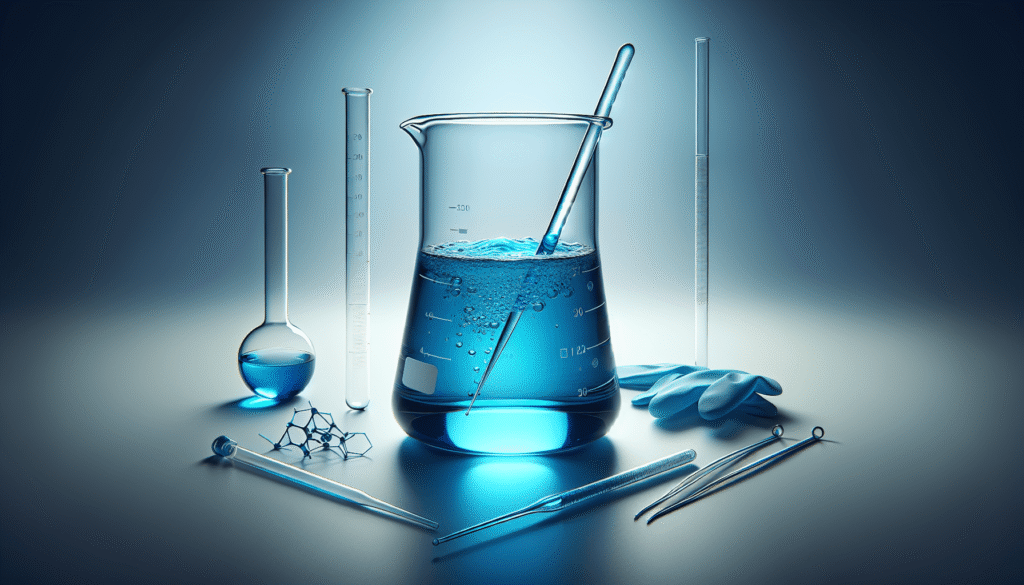
Have you ever wondered how to effectively prepare a methylene blue solution for staining purposes? Understanding the preparation of this widely used dye can significantly enhance your laboratory practices, especially in microbiology and histology.

Understanding Methylene Blue
Methylene blue is a synthetic dye that has a wide range of applications in biological staining, microbiological studies, and even in certain medicinal uses. As an effective stain for cells, tissues, and organisms, it helps visualize structures that would otherwise be indistinct under a microscope.
The compound is known for its rich blue color and has applications in both educational and research laboratories. Knowing the correct preparation method can lead to more consistent and reliable staining results.
Chemical Properties of Methylene Blue
Before you start preparing your solution, it is vital to grasp the chemical properties of methylene blue. Its chemical formula is C16H18ClN3S, and it has a molecular weight of 319.85 g/mol.
Methylene blue is a cationic dye, which means it carries a positive charge in solution. This attribute allows it to bind effectively to negatively charged components of biological tissues, such as nucleic acids and certain proteins.
Common Uses of Methylene Blue
- Staining Bacterial Cells: Methylene blue is often used in simple staining techniques to visualize bacterial morphology.
- Histological Staining: It helps in identifying cellular structures, providing clarity in tissue samples.
- Chemical Indicator: In redox reactions, it serves as an indicator and is widely used in various laboratory experiments.
Required Materials for Preparation
To prepare a methylene blue solution, ensure you have the following materials at hand:
| Item | Purpose |
|---|---|
| Methylene Blue Powder or Solution | The primary staining agent |
| Distilled Water | Used to prepare the solution |
| Beaker or Flask | For mixing the solution |
| Stirring Rod | To ensure thorough mixing |
| Scale | For accurate measurement of powder |
| pH Meter or pH Strips | Optional, for adjusting pH levels |
| Gloves and Safety Goggles | For protection while handling chemicals |
Choosing the Right Concentration
The concentration of the methylene blue solution can greatly impact the staining process. Common concentrations for various applications range from 0.1% to 0.5%. A 0.1% solution is generally sufficient for simple bacterial staining, while more complex staining protocols may require higher concentrations.
Step-by-Step Preparation of Methylene Blue Solution
The preparation of a methylene blue solution is a straightforward process. Following these detailed steps will help to ensure consistency and accuracy in your solution.
Step 1: Prepare Your Work Area
Establishing a clean and organized workspace is fundamental. Make sure that all materials are easily accessible and that the area is free from contaminants that may affect your solution.
Step 2: Measure the Methylene Blue
For a desired concentration, you need to measure the appropriate amount of methylene blue. If preparing a 0.1% solution:
- Calculate the Required Amount: If you want to make 100 mL of a 0.1% solution, you’ll need 0.1 g of methylene blue powder.
Calculation Examples:
| Desired Volume (mL) | Desired Concentration (%) | Required Methylene Blue (g) |
|---|---|---|
| 100 | 0.1 | 0.1 |
| 100 | 0.5 | 0.5 |
| 500 | 0.1 | 0.5 |
| 500 | 0.5 | 2.5 |
Step 3: Dissolve in Distilled Water
Place the measured methylene blue into a clean beaker or flask.
- Slowly add distilled water while stirring with a stirring rod.
- Continue stirring until the methylene blue is fully dissolved.
- Ensure there are no visible particles remaining in the solution.
Step 4: Adjust the pH (Optional)
Depending on your specific application, you might want to adjust the pH of your solution. Methylene blue can be more effective at certain pH levels.
- Use a pH meter to check the solution’s pH.
- If necessary, you can adjust the pH using hydrochloric acid (HCl) or sodium hydroxide (NaOH).
- Always add these reagents in small quantities, stirring continually, until you reach the desired pH.
Step 5: Transfer and Store
Carefully transfer your prepared solution into a clean, labeled container.
- Make sure to store the solution in a dark, cool place since methylene blue can degrade in light.
- It is generally advisable to use the solution within a month for optimal results.
Safety Precautions
Handling chemicals requires strict adherence to safety guidelines. The following precautions should be taken to ensure safety when preparing and using methylene blue solutions.
Personal Protective Equipment (PPE)
Always wear appropriate PPE, including:
- Gloves: To protect your hands from staining and chemical exposure.
- Safety Goggles: To shield your eyes from any splashes or irritants.
- Lab Coat: To protect your clothing and skin.
Waste Disposal
Methylene blue can be hazardous to the environment. When disposing of waste solutions:
- Follow your laboratory’s waste disposal protocols.
- Never pour methylene blue down the drain unless permitted by local regulations.
First Aid Measures
In case of accidental exposure, you should know the appropriate first aid measures.
- Skin Contact: Wash the affected area with plenty of water and soap.
- Eye Contact: Rinse immediately with plenty of water for at least 15 minutes and seek medical attention.
- Ingestion: Do not induce vomiting but seek medical assistance immediately.

Staining Techniques Using Methylene Blue
After preparing your methylene blue solution, you may want to apply it effectively. Different staining techniques can be employed depending on the samples being examined.
Simple Staining
Simple staining is one of the easiest methods to visualize bacterial cells. The procedure typically involves the following:
- Prepare a Thin Slide: Smear a small amount of the specimen on a clean microscope slide.
- Heat Fix: Pass the slide through a flame to fix the cells.
- Stain Application: Place a few drops of methylene blue on the slide and let it sit for about 1-2 minutes.
- Rinse: Gently rinse the slide with distilled water to remove excess dye.
- Observation: Examine the slide under a microscope.
Differential Staining
For more detailed analysis, you could employ differential staining techniques, such as Gram staining, that utilize methylene blue as a counterstain.
- Prepare a Slide: Similar to simple staining.
- Conduct Gram Staining: Follow the typical Gram staining protocol, where methylene blue is applied after the primary stain.
- Examine: Look for specific morphological characteristics that differentiate bacterial types.
Potential Problems and Solutions
Despite the relatively straightforward nature of preparing methylene blue solutions, several challenges may arise. Understanding these issues will prepare you to handle them effectively.
Incomplete Dissolution
If you find that your methylene blue does not fully dissolve, consider the following solutions:
- Increase Mixing Time: Stir the solution longer to increase solubility.
- Warm the Water: If safe to do so, slightly warm the distilled water to enhance solubility.
Staining Inconsistencies
If you notice inconsistencies in staining, evaluate these potential factors:
- Concentration Variations: Ensure you are using the correct concentration as per your application.
- Staining Time: Adjust the time the sample is exposed to the dye; longer times may yield more intense colors.
Degradation of Solution
If your solution appears to have lost color intensity over time, this may signify degradation. To counteract this, consider:
- Storage Conditions: Ensure the solution is stored in a dark glass container at low temperatures.
- Expiry Time: Follow the one-month guideline for optimal usage.
Conclusion
Preparing a methylene blue solution for staining is a technique that, when properly executed, can yield significant insights in biological research and education. Understanding the underlying principles, preparation methods, and application techniques will serve you well in your scientific endeavors.
By harnessing your knowledge of chemistry and biology, you position yourself to achieve more reliable and effective staining results, contributing to the broader field of scientific inquiry. As you proceed with your experiments, remember that accuracy and safety are paramount—ensuring that you achieve the clarity and detail necessary for successful analysis.